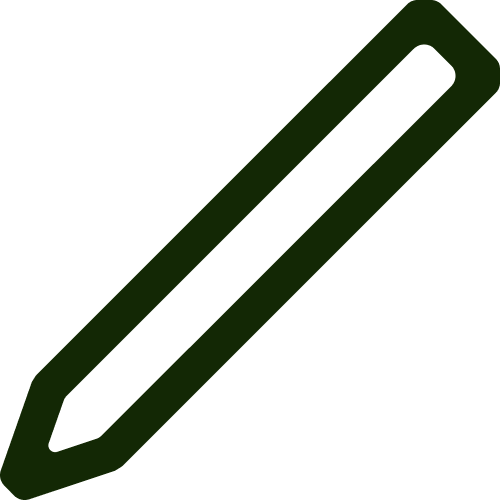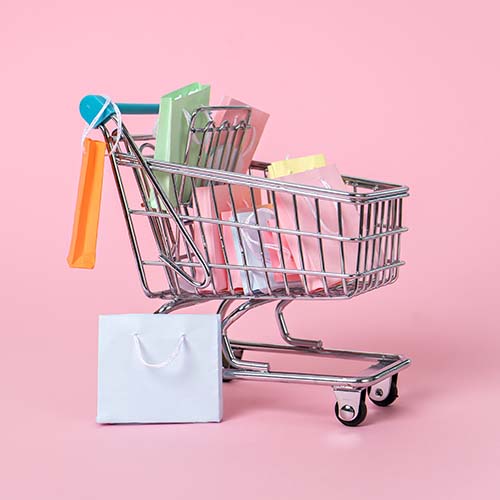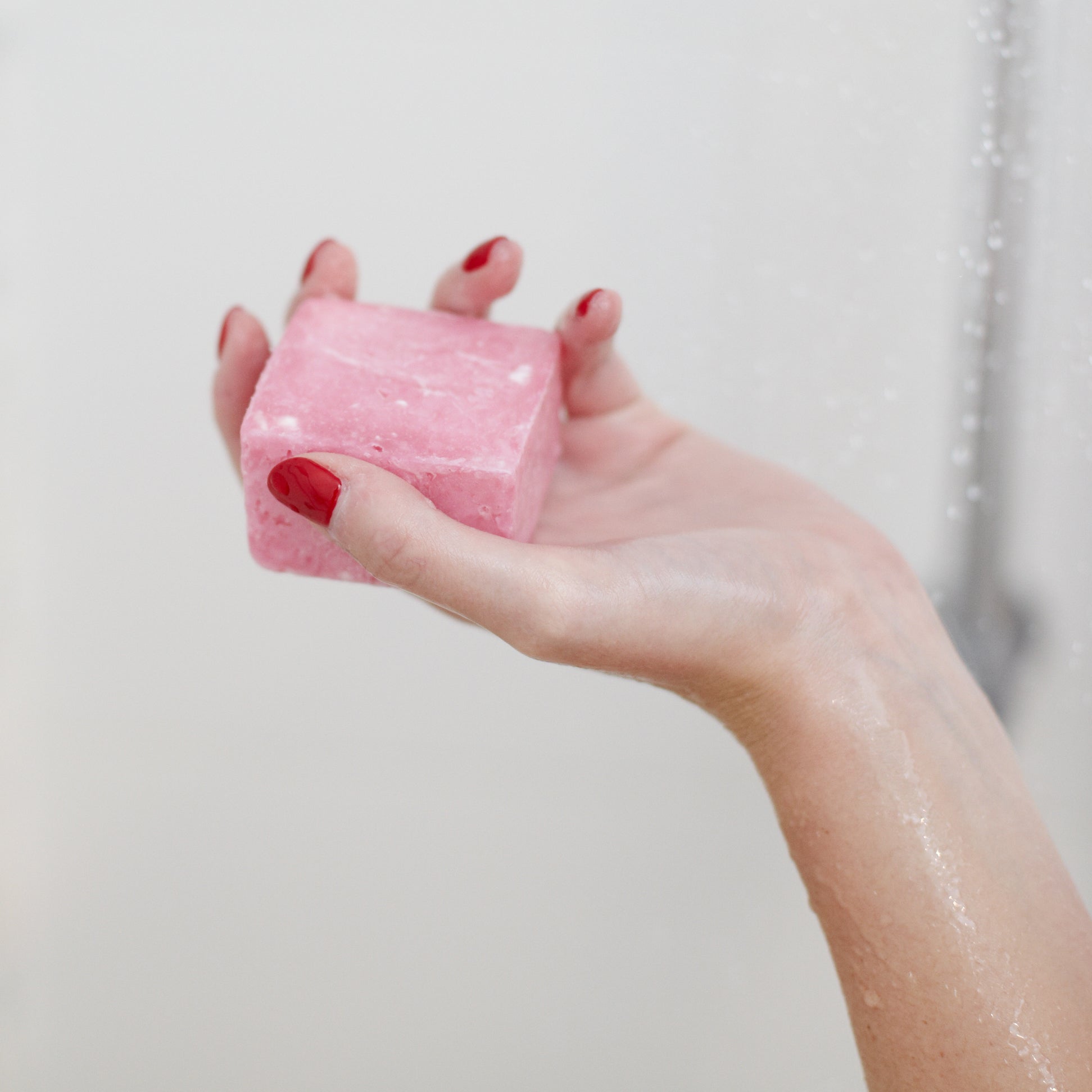Fear sells more products. Fear of not being good enough, fear of not being pretty enough, fear of toxins and chemicals. And yet, most of these marketing messages are full of myths and outright lies, and many of these started years and years ago, but have snowballed into something known by everyone, that is considered fact.
This method of selling a product has always annoyed me, so I am always doing all I can to break down these myths and show people the truth. If a company can’t sell a product with the truth… well… it’s not a very good product, is it?
So, here are the top hair care myths we see all the time:
- Your hair goes through a transition period/detox when you switch shampoos
- You need to do an apple cider vinegar rinse after using a shampoo bar
- Sulfates make a shampoo harsh or stripping.
- Your hair will get used to your shampoo so you need to change it up.
- Dry skin is the cause of flakey scalps, so you need to moisturise your scalp.
The “transition period.”
Your hair does not need to detox when you switch from one shampoo to another. This is true whether you are switching between liquid shampoos, jumping on the natural shampoo train, or moving into the solid shampoo game. The transition period is code for ‘this product doesn’t work for you, but if you persevere, eventually you might not notice as much”.
When you switch from one shampoo to another, it will either work immediately, or it doesn’t work for your hair. If you have switched to a shampoo bar and your hair feels horrible; rough, sticky with a weird residue, this is not a transition period. It just isn’t working for your hair. Most shampoos won’t do this. However, soap-based ones will.
I’ve talked about this before, that most solid shampoo bars out there are soap-based, which is bad for your hair and causes damage over time because the pH is too high. Your hair is naturally mildly acidic whereas as soap is always alkaline. If you want to know more about the specific chemistry behind this, you can read about this on our previous blog post here.
So, if you have switched to a shampoo bar and finding your hair is sticky or just feels weird, it’s highly likely that the bar you used is soap-based. If it works for you, great, but this pH imbalance will cause damage over time, even though it does eventually seem like your hair gets used to it.
If you switch to an actual shampoo bar, like an Ethique bar (which is exactly like what you get in a bottle of salon-quality shampoo, just without the water) you won’t experience this.
And if you do, it means that particular shampoo doesn’t work for your hair type. That is why we recommend trying minis, to find what does work for you and what doesn’t. Because not every product works for everyone, but that is not because of a transition period.
That leads on nicely to the second myth, which is that you need to do an “ACV rinse” when you switch to a shampoo bar.
Who has time for another hair care step? Especially if it’s unnecessary.
This does help after using a soap-based shampoo, because soap has a high pH and by rinsing with something acidic, you are in theory taking the pH of the hair back down to its natural pH of around 4.5-5 ( meaning the cuticles around your hair shaft will lie flat making your hair smoother and shinier).
The good news is, if you use a soap-free shampoo bar, like an Ethique bar, you can totally skip this step! Our shampoos are pH balanced and totally soap-free, so there is no need to restore the pH balance to your hair as it was never disturbed in the first place!
So, the myth that you need to use an apple cider vinegar rinse with every shampoo bar is just that – a myth. It depends on whether it’s a soap bar or an actual shampoo bar. If you want to know how to tell the difference, visit our previous blog about the difference between soap and shampoo here.
The next one is a biggie… sulfates.
I have previously written a blog about sulfates, so if you are interested in more in-depth information, you can find that here.
A sulfate doesn’t automatically make a shampoo harsh or stripping. The sulfate most people think of is sodium lauryl sulfate (SLS). Sodium lauryl sulfate is an extremely efficient cleanser. But it is just one sulfate, in a larger group. Sulfates are surfactants, and surfactants are a group of ingredients that are in almost all cosmetics as they bind oil and water together as emulsifiers, they make products foam, like your shampoo and face cleanser, they can thicken a product and you can even find them in things that might surprise you, like room or linen sprays. It is a huge group of chemicals – and remember, chemicals aren’t bad for you – you are made up of chemicals.
Sulfates are a group of surfactants that simply have a sulfate group on the chain. There is no truth to the myth that sulfates are carcinogenic. Nor, when used correctly, that they are harsh or stripping. Using them will not ruin your keratin treatment or perm. It is impossible to determine by one ingredient, whether that product will be harsh on you or not. In fact, some sulfates are gentle, like the one we use in some of our shampoos, called sodium coco sulfate. Sodium coco sulfate is made using all the fatty acids in an oil, ours comes from coconut oil, and it is less processed than sodium lauryl sulfate. It is gentler than sodium lauryl sulfate and considered safe for use in baby products.
What makes a surfactant harsh or not, is not the sulfur group, it is the size and structure of the molecule overall.
For those of you who use sulfate free products, you may notice that the foaming feels different. Sulfates are typically (but not always) better foaming agents, so you will often see them paired with one or two other surfactants, which are gentler, but not very good at producing bubbles. This mix of surfactants is a win-win because the more surfactants, the gentler the product. This is why you will always see at least three surfactants in our shampoos. It makes them super gentle but still foam beautifully.
Your hair will get used to your shampoo so you need to change it up.
This one is nice and easy. Your hair doesn’t become immune to your shampoo over time. There is no need to switch shampoos every three months. If you find you are not getting amazing results anymore, one of two things is happening. Either seasonal or environmental changes are resulting in your hair’s needs changing (i.e. hotter weather = sweating more) or you are used to your previous shampoo and your expectations have simply got higher!
Dry skin is the cause of those pesky flakes, so you need to moisturise your scalp to prevent dandruff.
No… it’s actually the opposite! Dandruff is caused by a fungus (malassezia), which lives naturally on everyone’s head (sleep well with that thought in mind). Malassezia feasts on the sebum we naturally produce and breaks it down into its components. One of these components is oleic acid. Unfortunately, about 50% of the population has some degree of sensitivity to oleic acid, and the presence of too much of it triggers an irritation reaction. Your body naturally tries to defend itself by speeding up the cell renewal process and rapidly shedding skin cells, causing flakes.
You can do a couple of things to help. Wash your hair and scalp regularly with shampoo and conditioner from your ear lobes down (unless you have very dry hair at the root.) Scalp massage can be very useful, but be gentle as it’s a delicate area. Don’t use too many hair products or oils, as they trap more oil and dirt that help the fungus thrive. And of course, if all else fails, you may need to reach for the medicated shampoo.
Do you have any myths you want debunked or further explained? Flick us an email!

 Impact
Impact Blog
Blog Store Locator
Store Locator



